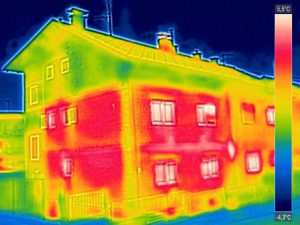 Windows are among the largest contributors to heat losses in homes. It is estimated that on average a house loses 25 to 30 percent of its thermal energy through windows. And although there are certain solutions including double- or even triple-glazing, windows remain the weakest link in the building’s thermal envelope. Researchers indicate that this could change for the better however, with a see-through aerogel made from wood cellulose replacing the air in windows, thus making them as insulative as their surrounding walls.
Windows are among the largest contributors to heat losses in homes. It is estimated that on average a house loses 25 to 30 percent of its thermal energy through windows. And although there are certain solutions including double- or even triple-glazing, windows remain the weakest link in the building’s thermal envelope. Researchers indicate that this could change for the better however, with a see-through aerogel made from wood cellulose replacing the air in windows, thus making them as insulative as their surrounding walls.
Conventional windows rely on gases (air, argon, or krypton) sandwiched between panes of glass to achieve their insulative properties. They can be made better insulators by either increasing the number of glass panels – which can reduce visual quality – or by expanding the width of the air layer. But anything wider than 1/2″ becomes detrimental to the insulative effect because convection currents which then arise transfer heat energy between the panes, thus defeating the gas’s purpose.
To address this, researchers are investigating using cellulose nanofibers to create an aerogel, a solid gel containing pockets of gas, that could function much better than gases in multi-glazed windows. Research is centering on a highly transparent aerogel that also has very high thermal insulation. Cellulose resulting from wood processing, otherwise discarded as waste, will be the raw material for the aerogel.
To make it, cellulose nanofibers from wood are first suspended in water, then the water is replaced with ethanol. Next, the aerogel is dried by raising the temperature and pressure, replacing the ethanol-filled pockets in the material with air. Silicon compounds are then added to the surface to make it water-repellent, thus reducing the risk of condensation when utilized in window glass. The result is a thin film with light transmission in the visible field of 97-99% (better than glass), a haze factor of less than 1%, and a thermal conductivity lower than that of still air.
Tiny pockets of air embedded in the aerogel mean it can be used to fill a wider space without the convection effects you would get with air alone. Tests indicate that an aerogel filling of approximately 3/4″ thick could provide the same degree of insulation as that of a fully insulated wall.
